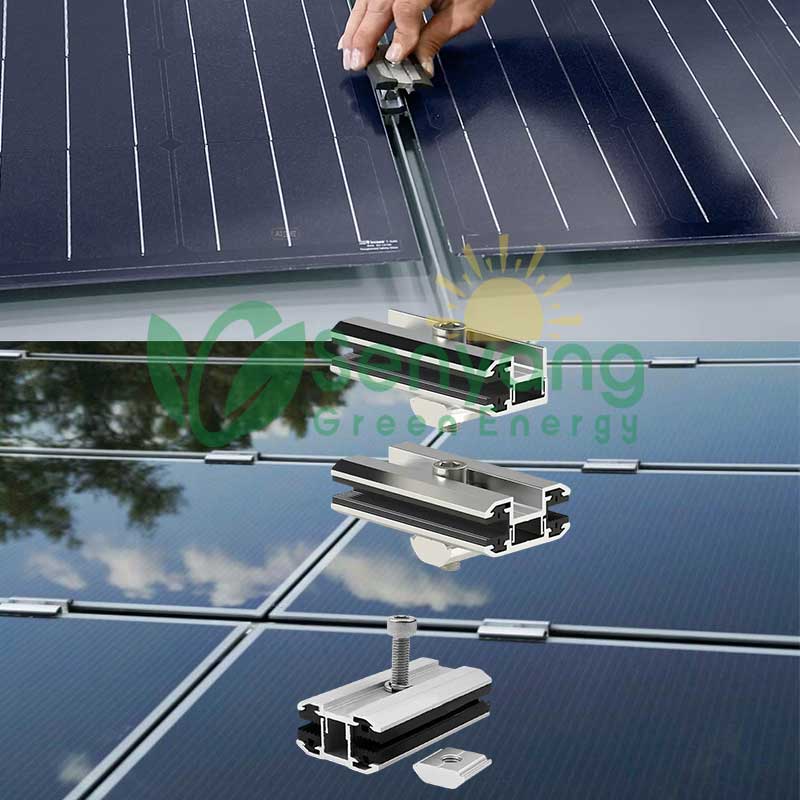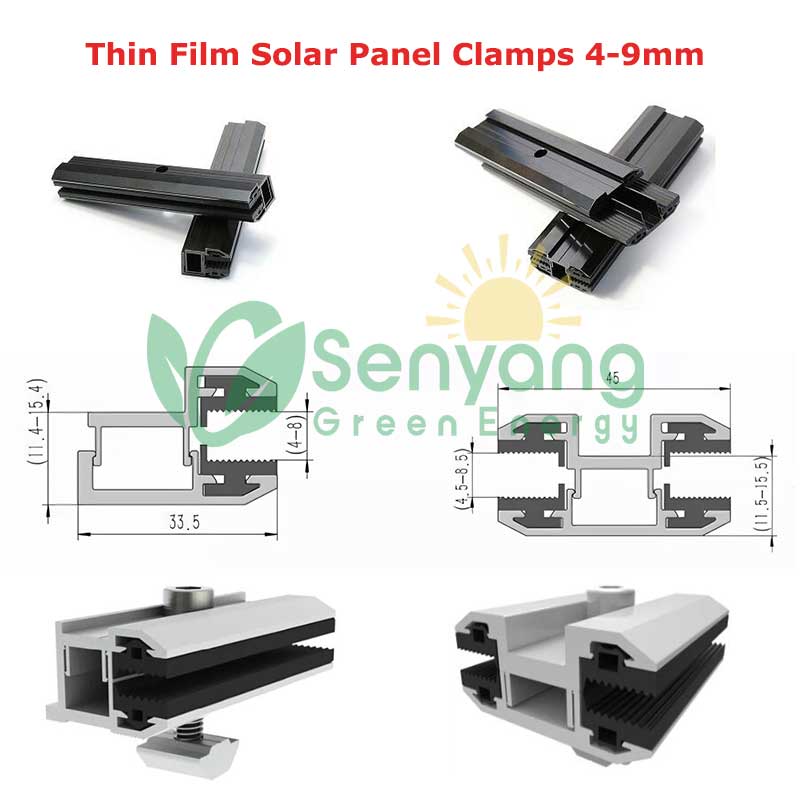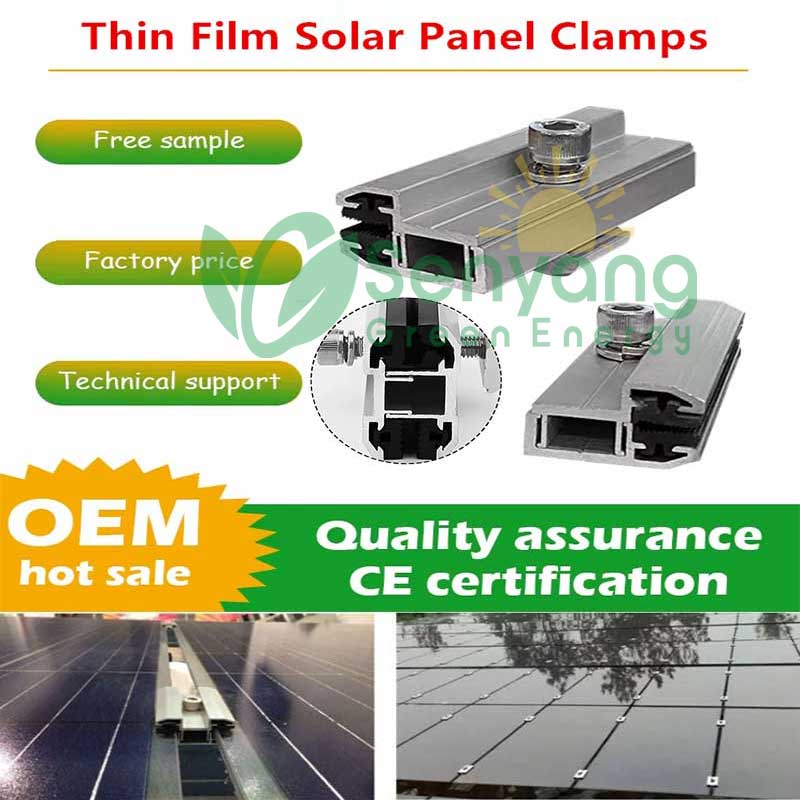Frameless Solar Panel Clamps are also called Thin Film Clamps which incorporate rubber pads to protect the delicate surface of the solar panel from mechanical stress and damage during the assembly process. This protective measure not only extends the lifespan of the panels but also maintains their structural integrity under varying environmental conditions.

Thin Film Solar Panels require specialized Frameless Solar Panel Clamps primarily for these critical reasons:
1. Preventing Damage from Point Loads & Stress Concentration:
Thin film panels (especially flexible types or those on fragile substrates) are much more susceptible to damage from concentrated pressure points compared to rigid crystalline panels with thick aluminum frames.
Standard clamps designed for thick frames exert force over a small area, creating high stress points. Thin film clamps have wider clamping surfaces or integrated padding/distribution bars that spread the clamping force evenly along a larger section of the panel edge or mounting rail. This prevents cracking, delamination, or deformation of the thin film layers or substrate.
2. Accommodating Unique Frame/Edge Profiles:
Thin film panels often have thinner, lighter, or differently shaped frames (or sometimes no traditional frame at all) compared to crystalline silicon panels. Our Thin film panels Clamp can support 4-9mm thickness.
Specialized clamps are engineered to securely grip these specific profiles without slippage or causing damage where the frame might be weaker or less robust.
3. Material Compatibility & Corrosion Avoidance:
Thin film clamps are typically made from corrosion-resistant materials like anodized aluminum and stainless steel, chosen specifically to be compatible with the panel frame material and prevent long-term degradation.
4. Weight Distribution:
While thin film panels are lighter overall, their mounting points might not be designed to handle the same concentrated stress as heavier crystalline panels. Clamps designed for even force distribution help ensure the weight of the panel is adequately supported across its attachment points without overloading weak spots.
5. Ensuring Long-Term Reliability and Warranty Compliance:
Proper clamping prevents micro-cracks, stress fractures, or edge seal compromises that could lead to moisture ingress, electrical failure, or reduced lifespan.
6. Vibration and Wind Load Management:
Thin film clamps are designed to securely hold the specific weight and profile of the panels under dynamic loads (wind, vibration) without allowing movement that could abrade the panel surface or loosen connections over time.
7. Flexibility in Mounting (Especially for Flexible Panels):
For truly flexible thin film panels, specialized clamping systems often involve bonding or unique rail systems that allow the panel to conform to curved surfaces while still being securely anchored without creating damaging stress points.
8. Ease of Installation:
Well-designed thin film clamps often integrate seamlessly with compatible mounting rails, simplifying and speeding up the installation process correctly and safely.

The main purpose of Frameless Solar Panel Clamps dedicated to flexible solar panels is to protect and support the solar panels through reasonable design, ensuring the stability of their performance and structure during manufacturing, testing and installation.
Our alum frameless solar panel clamps are specially designed for frameless solar panels / glass solar PV panels . The standard length of frameless solar panel clamps can be 60 mm, 80 mm, 100 mm , other sizes can be spoken. Besides, These clamps can connect frameless PV modules together firmly with aluminum rails and can bear 1.4 KN/ M2 snow load and 60 m / s wind speed . This thin film solar panel clamps can be compatible for most models in the market . Our mid clamp for solar panels have EPDM pads which can suck solar modules firmly .

In short, Frameless Solar Panel Clamps are not just “holders”; they are critical protective interfaces engineered to manage the unique mechanical vulnerabilities of thin film technology. Using the wrong clamp risks catastrophic panel failure, warranty invalidation, and reduced system lifespan.
